For your specific example, we can do it by using the values="..." attribute of the <animate/> tag. Your path is quite a simple example so creating this values="..." list is quite trivial.
If you want to to do this more generally, for any path, then you likely need to build a JavaScript parser of the d path and turn that into a list of x and y values (and for curved paths, this would be very difficult, but not impossible: https://stackoverflow.com/a/17096947/9792594)
Here's the demo: https://codepen.io/Alexander9111/pen/Jjogbbe

HTML:
<svg viewBox="0 0 500 500">
<path stroke="grey" fill="none" id="route" d="M50,25 l25,30 l-40,20 z" />
<circle cx="50" cy="25" r=5 fill="blue">
<animate attributeName="cx" values="50;75;35;50" dur="5s" repeatCount="indefinite" />
<animate attributeName="cy" values="25;55;75;25" dur="5s" repeatCount="indefinite" />
</circle>
<text x="50" y="25" text-anchor="middle" transform="translate(0,-7)">A
<animate attributeName="x" values="50;75;35;50" dur="5s" repeatCount="indefinite" />
<animate attributeName="y" values="25;55;75;25" dur="5s" repeatCount="indefinite" />
</text>
<circle cx="150" cy="50" r="5" fill="blue"> </circle>
<text x="145" y="40">B</text>
<line x1="50" y1="25" x2="150" y2="50" stroke="blue">
<animate attributeName="x1" values="50;75;35;50" dur="5s" repeatCount="indefinite" />
<animate attributeName="y1" values="25;55;75;25" dur="5s" repeatCount="indefinite" />
</line>
</svg>
Alternatively, we could think about JavaScript to animate it.
UPDATE - using JavaScript to track the circle's location as it is animated with the <animateMotion/> tag:
Demo: https://codepen.io/Alexander9111/pen/NWPQbma
HTML:
<svg viewBox="0 0 500 500">
<path stroke="grey" fill="none" id="route" d="M50,25 l25,30 l-40,20 z" />
<circle id="circle_motion" r=5 fill="blue">
<animateMotion dur="5s" fill="freeze">
<mpath xlink:href="#route" />
</animateMotion>
</circle>
<rect id="BBox" x="" y="" width="" height=""></rect>
<text id="text_motion" x="50" y="25" text-anchor="middle" transform="translate(0,-7)">A
</text>
<circle cx="150" cy="50" r="5" fill="blue"> </circle>
<text x="150" y="50" text-anchor="middle" transform="translate(0,-7)">B</text>
<line id="line_motion" x1="50" y1="25" x2="150" y2="50" stroke="blue">
</line>
</svg>
JS:
const svg = document.querySelector('svg');
const animateElem = document.querySelector('animateMotion');
const circle_motion = document.querySelector('#circle_motion');
const text_motion = document.querySelector('#text_motion');
const line_motion = document.querySelector('#line_motion');
const BBox = document.querySelector('#BBox');
var myInterval;
function startFunction() {
const box = circle_motion.getBoundingClientRect();
var pt = svg.createSVGPoint();
pt.x = (box.left + box.right) / 2;
pt.y = (box.top + box.bottom) / 2;
var svgP = pt.matrixTransform(svg.getScreenCTM().inverse());
//console.log(svgP.x,svgP.y)
text_motion.setAttribute('x', (svgP.x) );
text_motion.setAttribute('y', (svgP.y) );
line_motion.setAttribute('x1', (svgP.x) );
line_motion.setAttribute('y1', (svgP.y) );
}
function endFunction() {
clearInterval(myInterval)
}
animateElem.addEventListener('beginEvent', () => {
console.log('beginEvent fired');
myInterval = setInterval(startFunction, 10);
})
animateElem.addEventListener('endEvent', () => {
console.log('endEvent fired');
endFunction();
})
This is much more flexible, and we can change our amimate path to: <path stroke="grey" fill="none" id="route" d="M50,25 75,55 Q75,75 35,75 z" /> and we can also follow this non-linear path:


